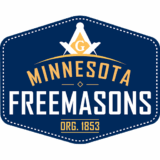Grand Lodge Education Officer
Leadership in Masonry: Who Do You Talk To?
Our Masonic family presents an interesting contrast when it comes to certain aspects of the art of leadership. On the one hand, we speak with great earnestness and certainty about our respect and celebration of the fundamental equality between all with whom we hold in brother or sisterhood. On the other, especially when it comes to they who sit in the East, we do have distinct hierarchies and once one becomes Master, one’s word is considered final and binding upon the Lodge.
For many of us, regardless if it is our Bethel, Lodge, Chapter, Valley or Temple, it is our first experience as a leader. “Working without a net,” as it were, can be invigorating, exciting, terrifying and often simply a dreadful experience. It is not uncommon for a sense of isolation to grip us and we can let that isolation set the tone for our year in the East.
But that certainly does not need to be the case, whatsoever. While it does take some affirmative action on the part of both the new Master and on those others of his or her peers, it can be incredibly supportive, informative and educational to reach out, on a totally level playing field, to gain support and peer insights.
Who can one turn to? The answer is wonderfully rich in breadth and scope, if one affirmatively sets out to open the paths of communications. First, and some would say arguably foremost, are your peers. Are there other, nearby Lodges or other institutions from your same Masonic group? Reach out to them, contact your equal and see if there might be some time for you to share, be it by phone, video link or over a drink in a coffee shop or other venue. In fact, if you can find several of your peers, you can consider the “Vistage” model as a possible way to get full, frank and insightful support from your fellow masters.
Vistage International is a peer mentoring membership organization for CEOs, business owners and executives of small- to mid-size businesses. Founded in 1957 as The Executive Committee, its model is to bring senior executives from similar sized businesses together for peer discussion, review and the sharing of insights. Sounds a lot like a few Masters having coffee on a Saturday morning, doesn’t it?
Just like similar businesses, Lodges share many of the same issues: Membership, filling the line, business issues, how to deal with individual brethren, inculcating the precious teachings from Masonry, etc. When gathered in a trusting, open, full and frank setting, one can share what challenges one is facing and get feedback and suggested courses of action from your peers. See what they think about the situation you’ve shared with them. There might be some ways of addressing the issue you haven’t considered, or perhaps you’ll get feedback that the solution you’re offering may have consequences you haven’t considered. In short, you can gain outside perspectives and ideas that will help you build and shape your enhanced trestle board, deal with leadership issues or improve the life of the Lodge.
Your ”peer group” need not just be limited to others currently in the same office as you. Seek out others you’ve come to know who have had the same office before you. You should not be surprised perhaps to hear “Oh, we had exactly that same issue come up when I was in your chair; here’s how we dealt with that…”. While it’s a clichéd joke that a Past Master is someone who knows everything and has all afternoon to tell you about it, nonetheless, those who have come before you can be informative, insightful and many times willing to give you unvarnished advice when sought out by you. You’re naturally under no obligation to heed that advice or suggested course of action, but it may give you further perspectives to use going forward in your office, though.
All of this does require something of you, though. You have to be open to a willingness in both communicating to those who’s advice you’re soliciting and above all making a commitment to actively listen to what they say in response to you. That’s often the hardest thing for any leader to do. We often feel we know what we’re going to do and are looking not for insightful solutions, but rather for affirmation of the decision we’ve already made. A true test of building one’s personal leadership style, then, comes when we hear a different solution and remain open to the fact that those we talk to about the challenges we may be facing may have better solutions than those we have already arrived at for an answer.
It can be argued then that it all depends on a willingness to talk about things with our peers and a willingness on our part to listening to what they have to say. That is another aspect to being a true leader.
Seek More Light, Quarite plus lucem
WB Andrew Niemyer
Grand Lodge Education Officer
